It turns out we are people who say, “we’ll just knock out these walls and join the two floors with an interior staircase. We’ll move the kitchen over here and add a bath. We’ll change this door to a window, and this window to a door.” We are people who say this even though our collective home remodeling experience is limited to painting a bathroom sometime during the first Bush administration and hanging a framed poster.
Fortunately, in Collioure everyone knows a guy. Neil, who sold us the place, knows Pascal, an experienced bilingual contractor who lived in Los Angeles for twenty years before returning to France. At our first meeting, long before we’ve closed on the house, Pascal tells us we will need an architect. We are in full agreement – we are ambitious, but not completely unrealistic, or so we think — and the next time we meet Pascal, he appears with Markus, a very tall German who speaks no English, but carries a smart clipboard and a selection of mechanical pencils.
The first order of business is to draw up the plans for the façade. The façade is the catch-all term for the exterior of the house. As with everything in our new life in France, we understand what is happening about 60% of the time, and nod vigorously in agreement 100% of the time. The façade! Absolument! We vaguely think about the interior, and how we’re knocking out all the walls, but if our guys want to discuss the façade, we will discuss the façade.
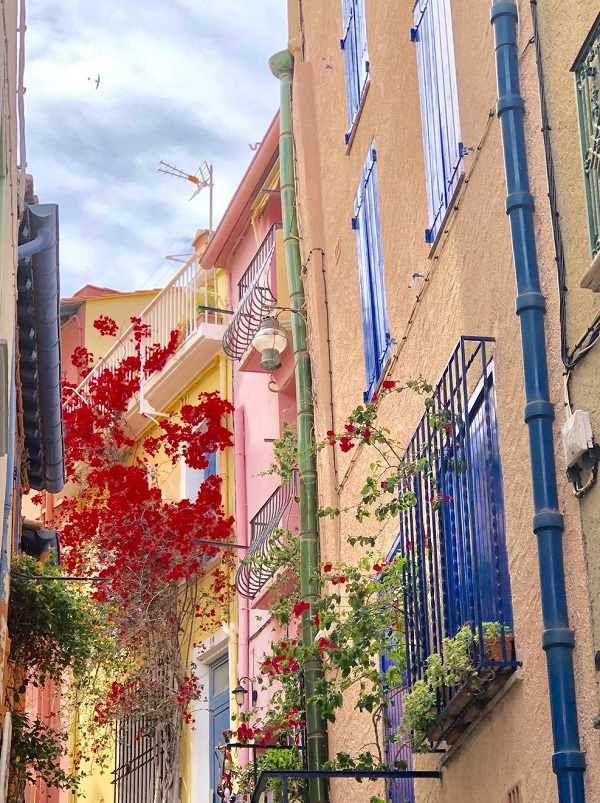
Over the course of three months we meet Pascal and Markus regularly. We stand in the middle of the street and stare at the house. We stand outside and stare at the house on warm autumn days and on windy winter days, during the Christmas holidays, and during the confinement, wearing masks. Sometimes we wander around inside (Neil has given us a set of keys), but mostly we stand in the street and stare at the façade. We talk about demolishing the exterior staircase. We talk about replacing the claustra railings with wrought iron similar to those of neighboring houses. And we talk about the shutters. Or rather, Pascal and Markus talk to each other in rapid French and whatever they’re saying always seems to be about the windows and the shutters.
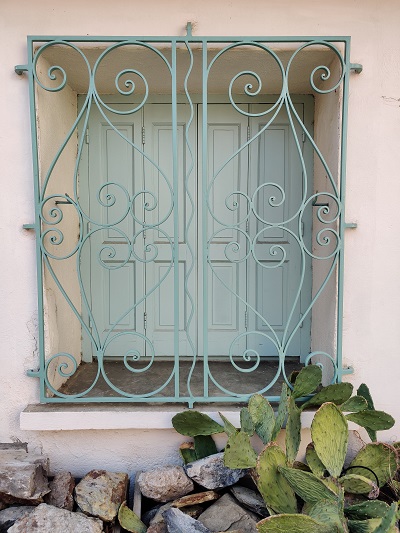
Their concern is justified. The house possesses an eclectic selection of window treatments. Two sets of original, elegant forest green volet catalan, or Catalan shutters; a pair of shiny white plastic shutters that shout “these were the cheapest we could find!”, white plastic roller shades, and a grim panel of security bars on the upstairs bathroom window that appear designed to ward off a crack squad of expert home invaders. At first, we thought that perhaps the original forest green shutters had rotted or fallen apart or been trashed by former renters, but no. We found them in the garage where they were inexplicably being used as shelving.
As we learned when we opened a bank account, the French feel it’s rude to get to the point. We learned this over a series of two hour meetings with our banker, during which we discussed how we are enjoying and adjusting to Collioure, how it’s the most beautiful village in France, and also how difficult it is to learn to speak French if you are American and how difficult it is to speak English if you are French, as well as the weather and any good wine we’d enjoyed recently, at the end of which he would produce a document that required our signature.
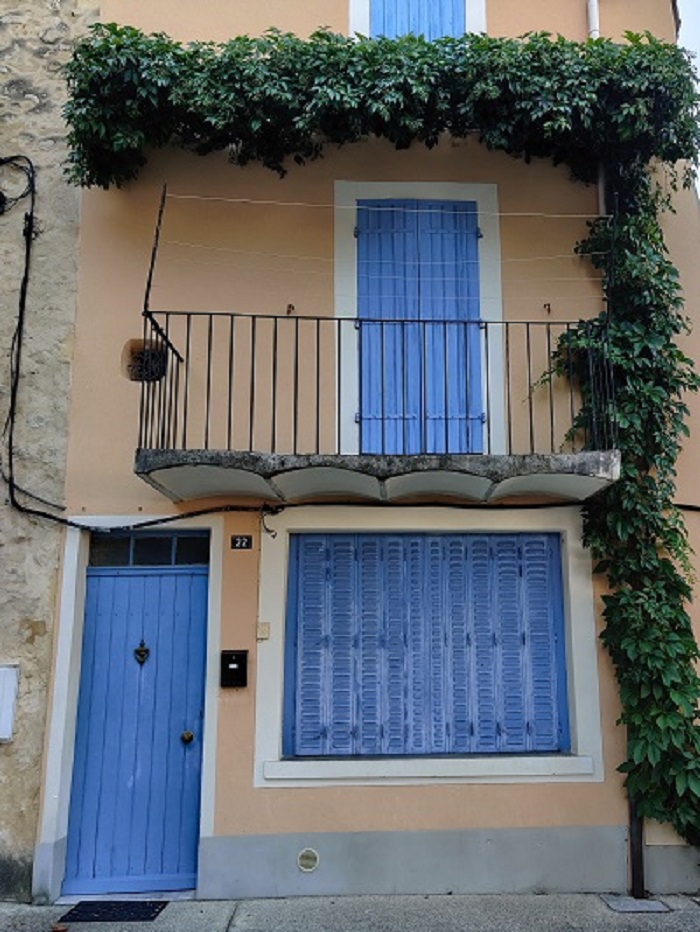
It eventually came out that Markus’s primary job was not to design the house – he was happy to draw up our ideas – but to produce the required drawings for the demande de declaration préalable a la realization des constructions et travaux, the special permit required by city hall. The permit concerned itself with the façade, and included the colors the house and the windows will be painted, selected from a palette approved by the mayor.
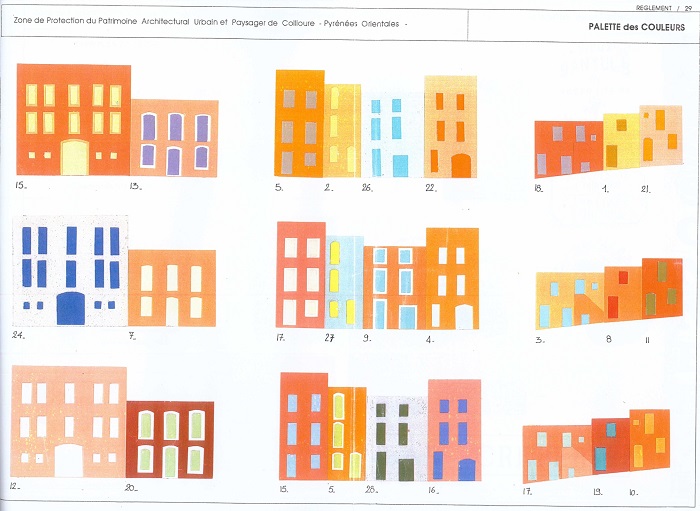
Collioure isn’t effortlessly beautiful it turns out. Here, and in other French villages whose economic health relies on visitors and their euros, local government has a big say. Ours insists on wooden shutters and wooden windows. No one cares what’s inside the house. You could be running a full-service brothel or Gus Fring-level meth lab, but as long as your façade is the correct color, with functional wooden shutters, you’re good.
After several of these windows/shutters related meetings, we realized Pascal and Markus were concerned that as Americans we might balk at the government dictating the look of our house, but we are all for it. Indeed, we are ready to roll up our sleeves and hire someone to restore the elegant forest green shelves-cum-shutters languishing in the garage. “Pascal,” I said one day, “Why didn’t the owners didn’t just fix the shutters and rehang them.”
“Yes, well, it is a mystery,” he said.
And so it remains. Possibly, it was too much of a hassle to repair them, or possibly the owners wanted to demonstrate their rebellious nature, thumb their nose at city hall, and see if they could get away with cheap white plastic and security bars.
I’m more than happy to have someone else tell me what color to paint my house, relieving me of one more decision. Also, and more importantly, the revelation of strict policing surrounding exterior paint color selection and shutter type reveal a reassuring little secret about the French. They aren’t born with a superior sense of style and taste. If left to their own devices, they’re just as likely to paint their houses egg yolk yellow and install crappy ass aluminum-framed windows as anyone else.
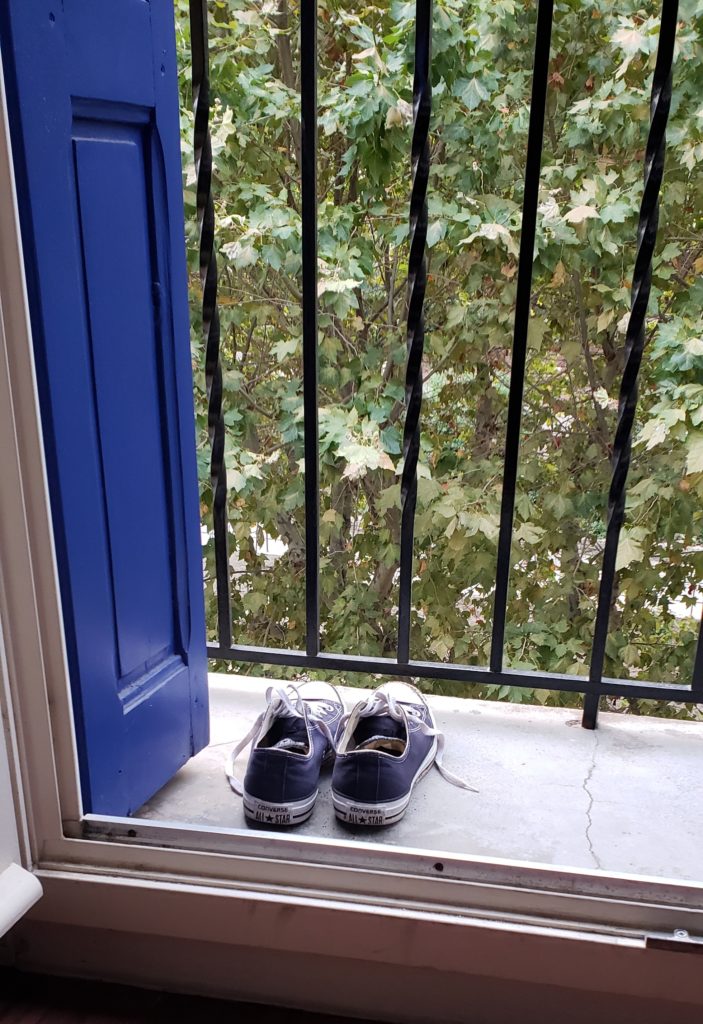
If you’d like to follow along on my incredible (and ridiculous) journey, please subscribe to my newsletter at the bottom of the page. Merci.








Love reading about your projects at your new house!
We’re learning A LOT about the ins and outs of “refairing” in Collioure. <3
Love it all Karen!!
I love reading your blog! Collioure is one if the most heavenly places I have ever been lucky enough to explore. Is it alright if I live my life vicariously through you?
Hi Marcy, Living in Collioure is pretty special. Does living vicariously through me also mean vicariously helping us sand and paint the entire interior? 🙂
J’aime le bleu. Tres charmant.
J’aime le bleu. Tres charmant.
Bonjour Thyka, I never thought I’d be a person who couldn’t get too much blue, but there are so many incroyable shades here!
Love this! I will look forward to more, KK!
Love your stories, Karen.
Merci, Ruth!
Karen, I accidentally came across your blog. What a treat! You continue wicked funny, generous, and far sighted. And a favorite read. You and Jane Austen.
Was in SOF last year exploring (and lusting after) the hill country and discovered that Peter Mayle eventually moved to Boston (?) to escape the legion of Year In Provence fans who showed up uninvited. However he did in the dead of night eventually relocate to—was it Aix?
Be forewarned…but of course you know his story…
Bonjour Judith! So glad you stumbled upon me, and thanks for your kind words.
I doubt I’ll be dodging fans in Collioure, but who knows?